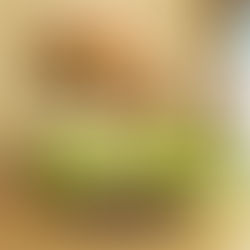Painting with Emotions: The Psychology of Colors in Your Artwork
- Sahar

- Feb 18, 2024
- 3 min read
Welcome, creative souls! Today, we embark on a vibrant journey into the marvelous world of colors and delve into the captivating psychology behind them. As an artist, understanding the powerful influence of colors not only elevates the aesthetics of your artwork but also unlocks a mesmerizing realm of emotions and perceptions.
So, let's arm ourselves with brushes and palettes and paint with emotions!

The Intriguing Power of Colors
Colors possess an extraordinary ability to stimulate our minds, provoke emotions, and even influence our actions. Harnessing this power will enable artists to communicate their intended messages more effectively, resonate with viewers on a deeper level, and ultimately create masterpieces that leave an indelible mark.
Primary Colors: The Building Blocks of Creativity
To unleash the true potential of colors, we must first explore the three primary colors: red, blue, and yellow. Symbolically representing passion, tranquility, and positivity respectively, these hues lay the foundation for infinite possibilities.
Red awakens the fire within, radiating energy and intensity. It symbolizes love, strength, and determination. Its invigorating presence commands attention, making it an excellent tool to highlight focal points or evoke powerful emotions within your art.
Blue, on the other hand, inspires serenity and calmness. It provokes introspection, relaxation, and tranquility. Splashes of blue can invite viewers into your artwork, creating a sense of peace or meditative ambiance. Brimming with ethereal charm, this hue encourages contemplation and emotional exploration.

Yellow, the vibrant embodiment of sunshine and joy, exudes positivity, optimism, and happiness. Its warm embrace can brighten any composition, infusing it with a vivacious spirit and uplifting the moods of its audience. Use yellow strategically to emphasize the positive aspects of your artwork and convey cheerful sentiments.
The Enigma of Secondary Colors
When primary hues join forces, secondary colors arise, presenting a whole new palette brimming with unique characteristics.
Green, born from the union of blue and yellow, symbolizes growth, harmony, and nature. This versatile color embraces numerous shades, from tranquil teal to vibrant lime, allowing artists to evoke a multitude of emotions. Experimenting with green can create a sense of balance, healing, and vitality, both in your artwork and in the hearts of your audience.
Violet, a mesmerizing blend of blue and red, carries an air of enchantment, luxury, and spirituality. Evoking a wide range of emotions, from mystery to sensuality, the various shades of violet inject depth and allure into your artwork. Integrate hints of this captivating color to add a touch of intrigue and leave your viewers lost in a captivating reverie.
Orange, a dynamic fusion of red and yellow, radiates enthusiasm, creativity, and passion. Its vibrant energy lends itself perfectly to artworks requiring a burst of vitality. By incorporating orange, you can imbue your creations with a sense of adventure, excitement, and uncontainable zest for life.

Finding Balance: Understanding Color Harmonies
As artists, we must grasp the importance of color harmonies, which involve selecting and combining colors to achieve equilibrium and evoke specific moods.
Complementary colors, found opposite each other on the color wheel, create striking contrasts that generate visual tension and drama. For instance, pairing blue with orange or red with green electrifies your artwork, making it impossible to ignore.
Analogous colors, siblings residing next to each other on the color wheel, produce a harmonious blend. This arrangement allows for smooth transitions between hues, promoting a cohesive and soothing visual experience. Experimenting with analogous colors is the perfect technique to achieve a sense of unity in your artwork.
Monochromatic color schemes delve into the various shades, tints, and tones of a single color. This approach creates a visually striking and cohesive artwork that showcases the vast emotional range encapsulated within a single hue. Play with shadows and highlights to add depth to your monochromatic masterpiece and leave your viewers in awe of your artistic prowess.

Creative warriors, armed with the knowledge of color psychology, you are now equipped to embark on sensational artistic adventures. Harness the power of colors, create emotional connections, and immerse your audience within the mesmerizing realms of your artwork.
Remember, painting with emotions begins with understanding the psychology of colors, setting your spirit ablaze, and making your art a splendid manifestation of your soul. So let loose, unleash your creative flair, and paint the world a kaleidoscope of emotions!

$50
Product Title
Product Details goes here with the simple product description and more information can be seen by clicking the see more button. Product Details goes here with the simple product description and more information can be seen by clicking the see more button

$50
Product Title
Product Details goes here with the simple product description and more information can be seen by clicking the see more button. Product Details goes here with the simple product description and more information can be seen by clicking the see more button.

$50
Product Title
Product Details goes here with the simple product description and more information can be seen by clicking the see more button. Product Details goes here with the simple product description and more information can be seen by clicking the see more button.








































Comments